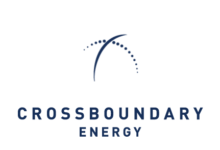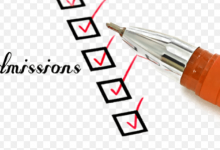
Nigerian Coat of Arms Description: Everything you need to know
This post is to enlighten you about what you probably did not know concerning the Nigerian Coat of Arms . Nigerian Coat of Arms has a black shield with two white lines that form in a “Y” shape. The black shield represents Nigeria’s fertile soil, while the two horses or chargers on each side represent dignity. The eagle represents strength, while the green and white bands on the top of the shield represent the rich soil.
The red flowers at the base are Costus spectabilis, Nigeria’s national flower. This flower was chosen for inclusion in the coat of arms as it is found all over Nigeria and also stand for the beauty of the nation. The white wavy pall represents the Niger and the Benue. On the banderole around the base is Nigeria’s national motto since 1978: “Unity and Faith, Peace and Progress” (formerly “Peace, Unity, Freedom”).
👉 Relocate to Canada Today!
Live, Study and Work in Canada. No Payment is Required! Hurry Now click here to Apply >> Immigrate to CanadaSummary Of The Meanings Of The Different Parts Of Nigerian Coat of Arms

1. Black Shield
At the centre of Nigeria’s coat of arms is a black shield. The shield was introduced to reflect Nigeria’s fertile land and rich agricultural heritage. Nigeria is well known for producing corn, cocoa, peanuts, rice, sorghum, yams, millet, cassava and sorghum. Indeed, the agricultural sector represents over 0.25 of GDP!
2. White Lines
On the black shield, there are two white lines that come together to form a Y shape (or a “Pall” as it is otherwise known).
These two white lines represent the two main rivers in Nigeria, the River Benue and the River Niger – the third largest river in Africa, after the Nile and the Congo-Chambesi.
The white lines represent the confluence of these two great rivers which meet at Lokoja, the capital of Kogi State.
3. Eagle and Horses
There are two horses standing upright on either side of the coat of arms. These horses are supposed to represent the value of dignity.
Above the shield is a red eagle. This is why the Nigerian Male football team are known as the “Super Eagles” and the females “super falcons”. The eagle symbolizes the strength and pride of Nigeria.
4. Flower Fields
At the bottom of the coat of arms, there are red flowers on a green field. These flowers are meant to represent Costus Spectabilis which is the national flower of Nigeria. Interestingly, the flowers are colored red when in actual fact the flowers are yellow.
5. National Motto
The Nigerian national motto appears on the banderole of the Nigeria. The national motto is “Unity and Faith, Peace and Progress”. This has been the motto of Nigeria since 1978 – beforehand the motto was simply “Peace, Unity, Freedom”.
👉 Relocate to Canada Today!
Live, Study and Work in Canada. No Payment is Required! Hurry Now click here to Apply >> Immigrate to CanadaWhen Did The Federal Government Adopt The Nigerian Coat of Arms?
Do you know when Nigeria started using the coat of arms? If you didn’t, you will leave this page better informed. The Federal government adopted the current Nigeria coat of arms in 1975. Previously, Nigeria had 12 separate States and each had its own coat of arms. The new coat of arms was supposed to serve as a symbol of unity for the Nigerian nation.
Perhaps you’re wondering who designed the Nigerian coat of arms. The truth is nobody really knows. Perhaps this is because the coat of arms was designed during the hectic period following the ascent to power of the military director, General Murtala Muhammed.
Finally, a small word of warning. Under the Flags and Coat of Arms Act 1990, you are breaking the law if you use or display the Nigeria coat of arms other than in conformity with a license granted by a Minister of the Government or according to the law.
The Seals Of Nigeria.











